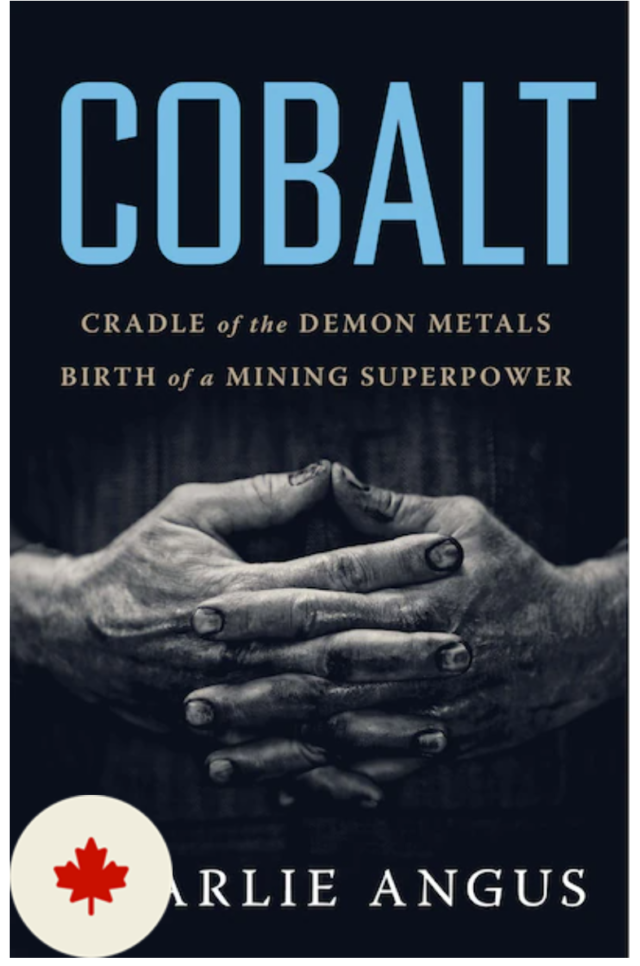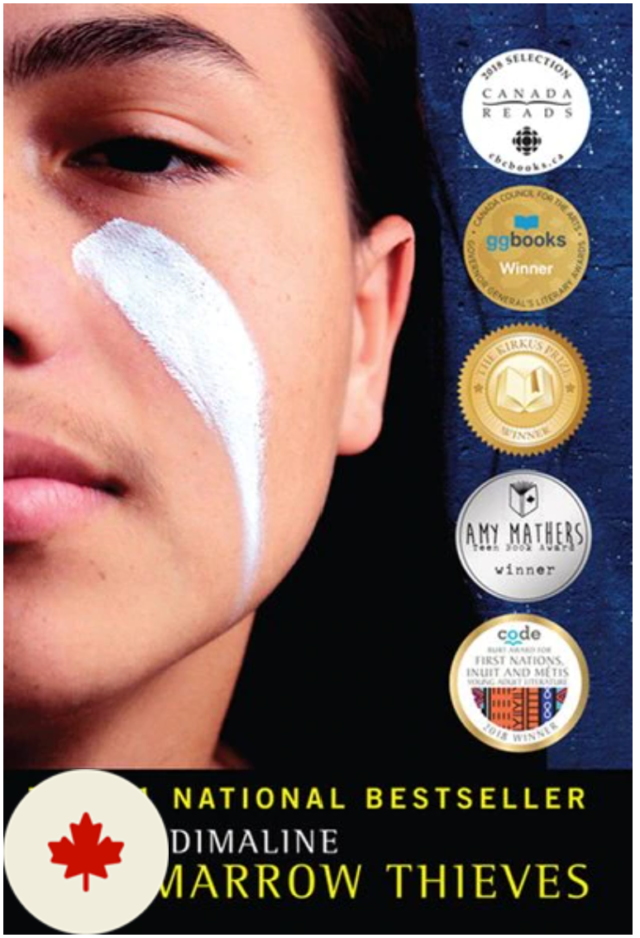Two Books: Metal and Marrow
Charlie Angus’s book, Cobalt, went everywhere with me – backyard, streetcar, subway, doctor’s waiting room, cottage – because it’s highly readable and really well done. I zipped through it even though it’s a depressing topic. Initially I picked Cobalt for two reasons: one, I heard Charlie Angus speak many years ago and found him to be very insightful; two, one of my family members was born in Cobalt and it is part of family lore of the “northland.” Of Ontario, that is.
Cobalt is the story of exploitation of northern Ontario. It starts not with the mining of the precious and elusive metal, but with internal colonization of the north of the province for the purpose of what all mother countries want – extraction of resources. And that meant, consistent with the rest of Canada’s history, disempowerment of the Indigenous people who were there. They lost their land and their rights to its riches.
Next came the exploitation of the workers who mined the silver for the benefit of large corporate interests. Cobalt was a boom town in the early 1900s. Like most, it saw its share of highs and lows, but the town is still there. It’s a real, thriving town, not a ghost town. That I like about Charlie Angus’s attitude toward the town where he lives. He details the ins and outs and who’s who of corporate control that essentially built the Toronto stock exchange, while he details the absolute mess they made of the town site. Poisoned water, no infrastructure, garbage everywhere. The Ontario government just didn’t want to pay and it didn’t want to force rules on precious corporations. Sound familiar? Eerily so.
Cobalt attracted a multicultural workforce from the start, and that’s where my family’s history comes in. While experienced American miners made their way there, so did Poles, Ukrainians, Finns (that’s Val’s family history), and Jews. From what I know, my family came from a small town (a shtetl, probably) in Belarus called Bichov. I may be mixing up different sides of my mom’s family, but suffice to say that they came from the former Russian empire. They set themselves up following the extension of the railroad in northern Ontario and sold supplies to local miners and lumberjacks. Eventually they settled in South Porcupine and then Timmins setting up a store and provisioning business. Timmins and Porcupine feature prominently in the book as the mining boom travelled north for gold after it was finished with Cobalt.
Like that, Cobalt’s story mirrors the Canadian experience that all started with the total exploitation of Indigenous peoples. We are all colonization and its after-effects, sadly.

My next book imagined the dystopian future of a colonizing past. The Marrow Thieves by Cherie Dimaline was an excellent if highly disturbing book. Written for young adult readers, it picks up the story of Indigenous people in the future after some kind of climate disaster has rocked the world. People can no longer dream, except for Indigenous people, so they are hunted for their bone marrow which supposedly returns the power to dream. It’s basically residential schools the second time around except that that the inmates are all killed for their marrow.
I picked up this book in my school’s English department book room. In case I recover grade 9 or 10 English, I like to read a few of the books they use. So was the story with with Richard Wagamese’s Indian Horse. I found a lot of parallels with the The Marrow Thieves though they deal in different time periods. Both books were very tough to read but also very hard to put down. The protagonist in The Marrow Thieves, Frenchie, is a boy who has been on the run after losing his family. He finds a new ‘family’ with a group of fellow travelers who are trying to escape the recruiters who literally hunt Indigenous people. It’s really the story of people trying to hang on not only to their existence but to their culture. There are many scenes in which the elders astound the youngsters with their knowledge of their language. Sound familiar? After taking a quick look through some reviews of this book, I don’t understand why so many negative readers couldn’t see that. It’s not really about running or dystopia. Those are just frames.
It’s a nicely written book. I liked Dimaline’s style: simple yet poignant in a very to the point way. I think Indian Horse has more depth and detail to it (the setting and the characters), but I don’t really think they’re meant to be compared. They are complimentary. After finishing The Marrow Thieves, I started up another YA book I had picked up: A Very Large Expanse of Sea by Tahereh Mafi. It didn’t last long before I decided it was poorly written and I put it down. Every sentence was written as if a teenager was speaking it. I guess for some people that is the point of YA’s realistic appeal. For me, I may swear A LOT when I speak, but I don’t want to read it. I’d like to (if I’m going to read fiction, that is) read a more idealistic voice at least in terms of language.
I think a 14 or 15 year old kid could do a lot worse than read the prose and the subject matter in The Marrow Thieves. We all need to keep learning the true history of our country.

Next, I have returned to a book I put down about four years ago because I found it too negative: Yuval Noah Harari’s 21 Lessons for the 21st Century. Now, the pandemic makes the book seem more tame and less depressing so I’ll give it another try.